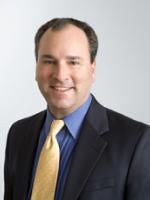In 1994, husband and wife created revocable trusts identical to one another. The trusts provided that upon the first spouse's death, a credit shelter trust (the "Family Trust"), a GST exempt QTIP trust and a GST non-exempt QTIP trust (the two QTIP trusts, the "Marital Trusts") would be created. The Marital Trusts provided that income was to be paid to the surviving spouse on an annual basis. The Family Trust also provided an inter vivos power of appointment for the surviving spouse to appoint property to any one or more of their descendants and charitable organizations.
The wife died in 1998 with a gross estate large enough that all three trusts were to be created and funded. The husband never segregated the trust assets into the three trusts. During the husband's lifetime, he made three significant withdrawals from the trust. He withdrew about $250,000 and then about $830,000 which he used to make a charitable contribution to a university. He also withdrew about $400,000 which he deposited into one of his accounts.
When the husband died, his Personal Representative could find no record of funding the three trusts, so he deemed all of the distributions to have come from the Marital Trusts. These distributions would have exhausted the assets of the Marital Trusts so that only the Family Trust, which did not have to be included in the husband's gross estate, was left.
The Service argued that the amounts later contributed to the university could only have come from the Family Trust because that was the trust with an inter vivos limited power of appointment in favor of charities and that the contributions were made directly from the wife's trusts to the university (rather than being distributed to the husband first). The amount that the husband withdrew from the trust account and then deposited into his own account was deemed to have come from the Marital Trusts.
In summary, it is important to segregate assets and fund trusts correctly at the appropriate time. While it can be attractive to leave assets in one trust account for ease of administration, the trusts must be funded correctly to achieve estate tax planning objectives.







 />i
/>i

